While I sip another cup of black coffee, my mother walked into my room with her all-time favourite warning, ‘I’m telling you this coffee will dry up your brain’.
Brain at work
While I sip another cup of black coffee, my mother walked into my room with her all-time favourite warning, ‘I’m telling you this coffee will dry up your brain’. Then she goes on, ‘I must go ask your grandma for the recipe of the brain powder so that your brain could get faster and smarter.’ Like always, I try to distract her by reminding her of all the ‘totkas’ we have already tested.
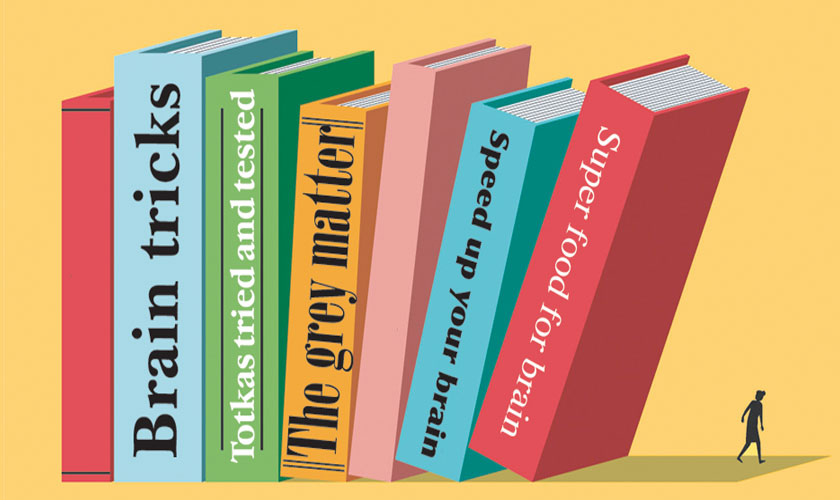
Brain has always been there in our narrative; whether we have a knack for science or not, we know brain is mighty and mysterious. When we run out of ideas, we find ourselves saying ‘dimag nahi chal raha ha’ (mind is not working) or when we aren’t able to make a decision, we get this famous piece of advice: dimag se socho (think with your mind). At simpler levels, we all understand that this delicate organ does all the hard stuff.
Us talked to Rehan Rehman, a neuroscientist, about how neuroscience informs education. Rehan believes in the immense power of brain especially when it comes to effective learning.
At the heart of everything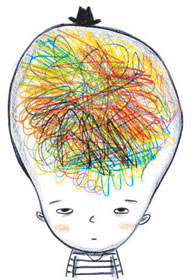
Can a human live without a brain? No, it’s nearly impossible! The brain is like the microprocessor chip in a computer; take that out and the entire system becomes dysfunctional. It guides our thoughts, speech and movements, decisions and emotions. In the field of neuroscience, brain is the hero. But it doesn’t stop here; neuroscience encompasses almost every aspect of our lives. Whether it’s a matter of keeping healthy relationships with your loved ones or coping with your mood swings or deciding what to eat at a restaurant, neuroscience is at the heart of everything.
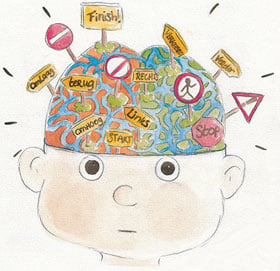 Lately, neuroscientists have shown huge interest in education. The purpose is to inform learners and teachers about what role nervous system plays in our learning and development. Neuroscience can give solutions for most of our learning woes. It could be anything from something as complex as writing a PhD thesis to something as simple as solving an algebraic equation.
Lately, neuroscientists have shown huge interest in education. The purpose is to inform learners and teachers about what role nervous system plays in our learning and development. Neuroscience can give solutions for most of our learning woes. It could be anything from something as complex as writing a PhD thesis to something as simple as solving an algebraic equation.
Just think of teenage years when almost everyone is troublesome and dangerous; during this stage, brain undergoes significant changes, but many fail to realize this. As a result, teenagers are termed as ‘rebellious’, ‘irresponsible’ and ‘rowdy’. Adequate knowledge on this matter could be of great help in understanding human development and dealing with social and emotional distress. For instance, if policy makers understand how sleep cycle gets affected during teenage, they could reconsider the timings of classes in the morning.
Exam time: let’s ‘not’ cram
It wasn’t easy to memorize a 300 page notebook in a day. I made it through the entire term! Just can’t believe it; I am a cramming champion! But, what if I forget this whole lot of information during the exam?
Yes, unfortunately, cramming doesn’t work here. Students are world-class procrastinators. So just a night before exam, all they could do is cram. Storing a huge amount of information is something they worry about.
Spacing effect can solve this. It goes like this: learning is greater when studying is spread out over a longer period of time (spaced presentation) and not just restricted to a single session which is usually the night before exams (massed presentation). Intense, last-minute studying is not effective and reliable. Space out and give your brain more time to grasp so that it never forgets anything.
Another way to sharpen up your memory is to associate one piece of information with an object, thought or image that is striking. This is because brain encodes and retrieves information through association.
I get this! If I had known about this association trick back in school, I would always see an animal cell as a pizza and never get its structure wrong in my tests; cytoplasm is the cheese, pepperoni/meatball is the nucleus and strips of bell pepper are mitochondria, olives are the vacuoles. I am salivating already!
Neuroimaging: looking inside the brain
You must have come across taxi and/or bus drivers who have that GPS thing in their head; their navigational skills are extraordinary! You don’t know the exact address, just give them few hints and these drivers will become your ultimate guide to that place.
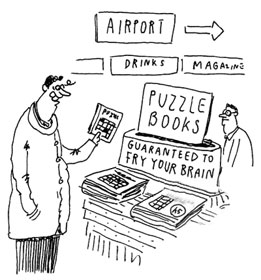 That is why Eleanor A. Maguire and her colleagues decided to take a sneak peek at the brains of experienced taxi drivers in London. They discovered that taxi drivers had a larger hippocampus - a part that stores spatial memories - than other people who didn’t drive taxis.
That is why Eleanor A. Maguire and her colleagues decided to take a sneak peek at the brains of experienced taxi drivers in London. They discovered that taxi drivers had a larger hippocampus - a part that stores spatial memories - than other people who didn’t drive taxis.
This bring us to the world of neuroimaging which has opened up so many interesting avenues of research on brain. It involves a close study of the structure and function of the brain in a non-invasive manner. Recent advances in neuroimaging have enabled neuroscientists to investigate the brain in-vivo and understand the complexities of the brain. It is like secretly watching the busy brain. Ask a person to lie down inside a MRI scanner, give him/her a task to do and see how brain works. Technology is helping scientists unlock the mysteries of the brain. You can even get a 3D map of your brain!
Brain-based learning programmes
My bookshelf has been holding a self-help book on brain tricks since I was in school. I don’t remember exactly if I finished reading it or not, but I just can’t discard it. Well, these books fascinate students. Who doesn’t want a smarter brain?
When we talk about brain-based learning programmes, it refers to teaching methods, lesson plans, and school/college programmes, books and even simple brain exercises that are based on scientific evidence on how brain learns.
While this seems very tempting, brain-based learning programmes are more of a business venture; current literature discounts popular brain-based learning programmes as a way to improve learning.
Brain teasers and games are also part of brain-based learning. A lot of mobile applications are now being designed for this purpose. Swipe your phone and solve some puzzles or crosswords to enhance your cognition. It is not as simple as it sounds! Doing something repetitively, like solving a puzzle again and again can build up your self-belief but can’t enrich your brain.
However, few things do work like practicing mindful meditation, or solving language or mathematical puzzles.
If you read newspaper daily, you already have a sharp brain! It is because daily papers have an entire page devoted to some ‘brain-based learning’. I am talking about the fun and tricky stuff like chess, sudoko, crosswords, bridges, hocus focus (find the differences) and comic strips.
Neuro-myths debunked
“Dimagh chalane ke liye koi chabi ya totka nahi hai huzoor! Science hai science!”
It could take you hour-long sessions to explain your students that humans don’t use only 10 percent of their brains. When it comes to circulating neuro-myths, Hollywood movies are also to be blamed. In the movie ‘Limitless’, for instance, the character Eddie Morra takes a certain drug to speed up his brain. This movie raised questions in the minds of the people: is this drug real? Or if we could get it sometime in the future? Let me tell you, this is utter nonsense!
Others myths include:
All of these myths are counter-intuitive and they aren’t backed by any scientific evidence.
One ever-green myth in the field of neuroscience is the categorization of people into left-brained and right-brained people. Lateralization of brain function is a concept that states that certain behaviours or cognitive processes are more dominant in one hemisphere than the other. While this is true to a certain extent, the two hemispheres of the brain are connected to each other by a band of nerve fibres called the Corpus Callosum. In simpler words, this means that both the hemispheres of the brain interact with each other to generate our behaviours. There is little data if at all to support the left-brained/right-brained people myth in neuroscience. Unfortunately though, a lot of people still believe in this. The teaching methods based on this myth are of course a big problem.
Helping others learn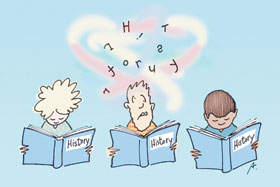
We can use neuroimaging to detect biomarkers of learning disabilities, like dyslexia and autism in infancy, when observable behavioural symptoms don’t appear. In high-risk families where such conditions are usually genetic, regular screening is necessary. This can help such individuals and their families to prepare for the future and seek appropriate interventions and therapies. In Pakistan, a lot of people prefer to turn a blind eye to the individuals with learning difficulties. They wouldn’t bother if a child stammers, quickly forgets what he/she learns, or doesn’t read properly. We have to offer them a helping a hand and through creating awareness and appropriate treatments, we can help them learn.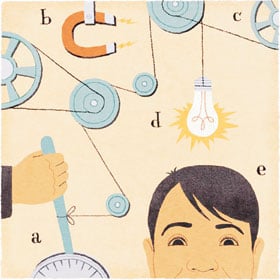
Eyes on the future
There is no better place like school for educating the masses. Rehan plans to target educational institutions where students could be taught about the brain and the field of neuroscience.
A city-wide and then a nation-wide awareness project on the importance of neuroscience in our daily lives, particularly with respect to education, could bring together scientists, researchers, educationists and students. But before that, Rehan wishes to have his own cognitive neuroscience laboratory where he could work along with other professionals in the field and research extensively. His idea is very simple: know your brain and get the most out of it.
I knew right from the beginning that a smarter and faster brain was not just seven almonds away!
Can you fill your tummy with lots and lots of food and still feel energetic in the morning? So, how come you cram a semester’s worth of information in a couple of hours and just do fine on the day of exam?
A heinous practice
Many young children become a victim and sold into begging because of an ancient fertility tradition. Healthy infants are handed over to the shrines, where they are made to wear an iron cap until their heads stop growing. This leaves them with the condition called microcephaly in which the head is abnormally small; they develop severe physical and mental complications. Due to their shrunken heads and protruding face, they are ridiculed as ‘rat-children’.